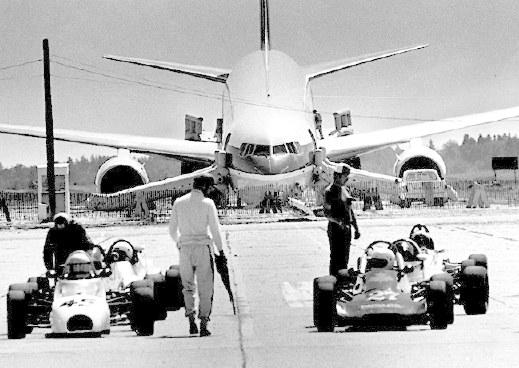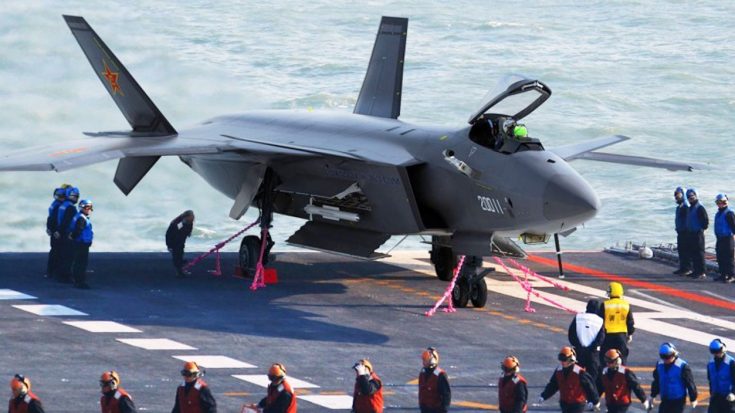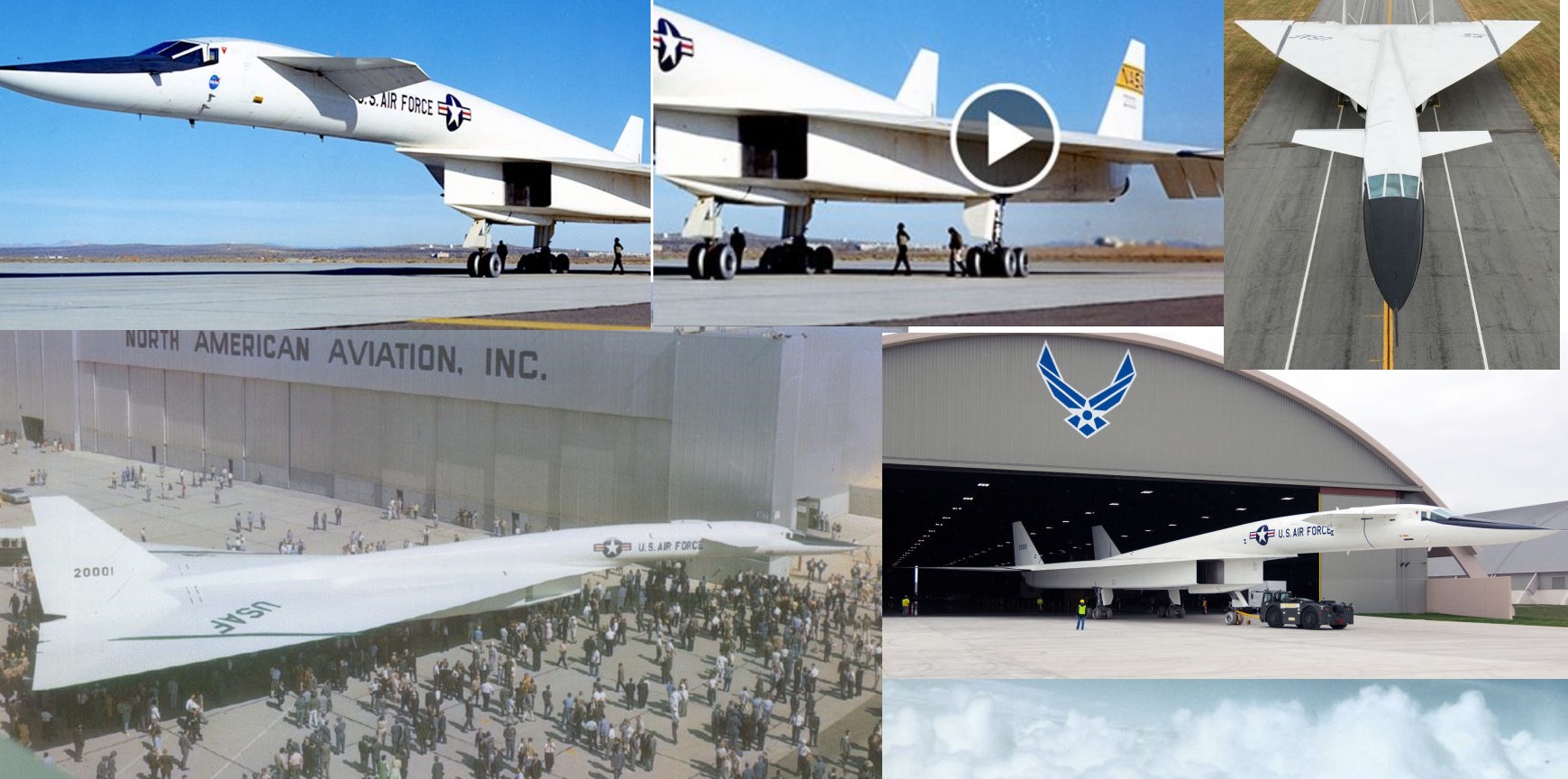
Rare Supersonic Bomber Rolls Out of the Hangar for the First Time in Decades | Loungtastic

The world's only remaining North American XB-70 Valkyrie supersonic bomber recently moved into the newly built fourth hangar at the National Museum of the U.S. Air Force in Dayton, Ohio. During the trip The rare, wild-looking prototype soaked up some sunshine for the first time in decades, and posed for a few photos during its rare outdoor excursion across the airport.
Video can be seen here Click HERE for video
U.S. Air Force / Ken LaRock
The XB-70 Valkyrie is the prototype of the B-70 nuclear-armed, deep-penetration strategic bomber for the U.S. Air Force's Strategic Air Command.
Only two aircraft were ever built, and the program was cancelled before production had a chance to begin. The XB-70 was powered by six General Electric YJ93s capable of generating 30,000 lbs. thrust each, with afterburner. North American Aviation designed the Valkyrie to be able to reach speeds in excess of Mach 3 while flying at 70,000 feet.
Video can be seen here Click HERE for video
The B-70 was expected to easily outrun any enemy interceptor aircraft—the only effective weapon against bomber aircraft at that time. The Valkyrie would spend only a few minutes over a particular radar station, flying out of its range before the controllers could vector their fighters into a suitable location for an interception. Its high speed made the aircraft difficult to see on radar, and its high altitude could not be matched by any contemporary Soviet fighter.
U.S. Air Force / Ken LaRock
The problem for the Valkyrie was newly developed Soviet surface-to-air missiles that relied on radar line-of-sight to find its target. Once these came on the scene, the U.S. Air Force changed its aerial strategy to flying low-level penetration missions to avoid the missiles. For this role, the X-70 offered little advantage over the B-52 it was slated to replace.
Video can be seen here Click HERE for video
And as the 1950's came to a close, manned bomber missions began to fall in popularity in favor of intercontinental ballistic missiles (ICBMs). The plane's high cost and limited range further decreased the Department of Defense's desire to finance the program. The Air Force could see the writing on the wall and eventually gave up the fight.
The B-70 program was canceled in 1961, and the military handed over development to a research program meant to study the effects of long-duration high-speed flight. Two prototype aircraft were built for the program and designated XB-70A. A joint NASA/Air Force supersonic research program flew these planes from 1964 to 69, and much of the data gained from this effort went into the development of the B-1 bomber. In 1966, one of the prototypes crashed after colliding in mid-air with a smaller jet aircraft. But the first XB-70A airplane—this one—continued to fly and generate valuable data until it retired and came to the National Museum of the United States Air Force in 1969. Now, the plane is moving into the museum's 224,000-square foot fourth building, which is scheduled to open to the public in June 2016.
It will house four galleries—R&D (where the Valkyrie will live), Space, Global Reach, and Presidential—along with three science, technology, engineering and mathematics (STEM) Learning Nodes. The construction of the newest hangar was privately financed by the Air Force Museum Foundation, which gifted more than $40 million for the construction. The public will be able to view aircraft as they move into the fourth building from a designated area on the museum grounds. Information on the move schedule will be updated regularly on the museum's website. A map of the viewing area and additional information about the expansion also are available on that page. But if you just can't make it out to Dayton, Ohio, you can climb aboard the XB-70 and other aircraft inside the museum virtually with these amazing 360º interactive cockpit images.
Flight Of The Valkyrie.
The North American Aviation XB-70 Valkyrie is am immense, exotic and incredibly fast supersonic bomber. Many have never seen the Valkyrie because only two models of the prototype jet were built and used for testing. So what is the history of the XB-70,
the world’s fastest supersonic bomber?
Introduced in 1964 the XB-70 was planned as a supersonic bomber as well as a research aircraft. It underwent rigorous testing over a period of five years to ensure that it was suitable for combat missions. Equipped with six engines it had no trouble hitting a top speed of Mach 3 while flying at over 70,000 feet.
Those high speeds allowed it to easily outpace enemy fighters and missiles targeting it.
General Characteristics
- Crew: 2
- Length: 189 ft 0 in (57.6 m)
- Wingspan: 105 ft 0 in (32 m)
- Height: 30 ft 0 in (9.1 m)
- Wing area: 6,297 ft2 (585 m2)
- Airfoil: Hexagonal; 0.30 Hex modified root, 0.70 Hex modified tip
- Empty weight: 253,600 lb (115,030 kg; operating empty weight)
- Loaded weight: 534,700 lb (242,500 kg)
- Max. takeoff weight: 542,000 lb (246,000 kg)
- Powerplant: 6 × General Electric YJ93-GE-3 afterburning turbojet
- Dry thrust: 19,900 lbf[78] (84 kN) each
- Thrust with afterburner: 28,800 lbf[79] (128 kN) each
- Internal fuel capacity: 300,000 lb (136,100 kg) or 46,745 US gallons (177,000 L)
Performance
- Maximum speed: Mach 3.1 (2,056 mph, 3,309 km/h)
- Cruise speed: Mach 3.0 (2,000 mph, 3,200 km/h)
- Range: 3,725 nmi (4,288 mi, 6,900 km) on combat mission
- Service ceiling: 77,350 ft (23,600 m)
- Wing loading: 84.93 lb/ft2 (414.7 kg/m2)
- Lift-to-drag: about 6 at Mach 2[113]
- Thrust/weight: 0.314
The development program of the XB-70 was a success but it was not without accidents. On June 8th, 1966 during a promotional photo shoot an F-104 underestimated its distance from the Valkyrie and crashed into its wing. Unfortunately, the XB-70 program was canceled in 1969 and the only remaining model remained in storage.

(U.S. Air Force photo)
North American XB-70A Valkyrie just after collision. Note the F-104 is at the forward edge of the fireball and most of both XB-70A vertical stabilizers are gone. (U.S. Air Force photo)
There is some good news, Jeff Duford the curator of the National Museum of the U.S. Air Force has successfully moved the only remaining Valkyrie into a public display. Take a look at this video showing the rich history of the XB-70 and its exciting test footage.
 Remember, NEXT VIDEO will automatically play after this one finishes!
Remember, NEXT VIDEO will automatically play after this one finishes!
Enjoy. Subscribe!
Facebook Page
Latest from Loungtastic...
20 Things You Never Knew About Flying Commercial
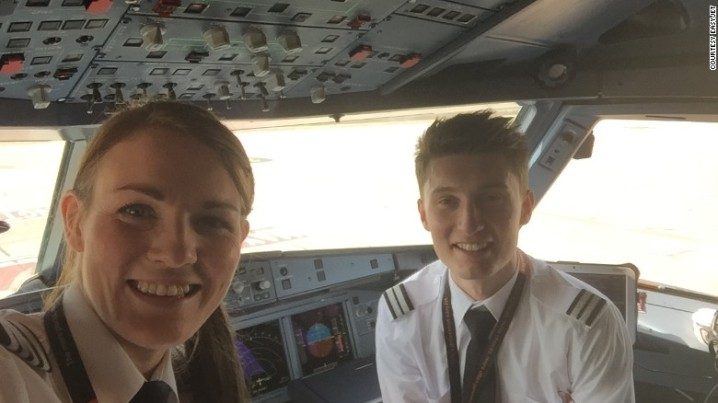

Rare Supersonic Bomber Rolls Out of the Hangar for the First Time in Decades | Loungtastic

The world's only remaining North American XB-70 Valkyrie supersonic bomber recently moved into the newly built fourth hangar at the National Museum of the U.S. Air Force in Dayton, Ohio. During the trip The rare, wild-looking prototype soaked up some sunshine for the first time in decades, and posed for a few photos during its rare outdoor excursion across the airport.
Video can be seen here Click HERE for video
U.S. Air Force / Ken LaRock
The XB-70 Valkyrie is the prototype of the B-70 nuclear-armed, deep-penetration strategic bomber for the U.S. Air Force's Strategic Air Command.
Only two aircraft were ever built, and the program was cancelled before production had a chance to begin. The XB-70 was powered by six General Electric YJ93s capable of generating 30,000 lbs. thrust each, with afterburner. North American Aviation designed the Valkyrie to be able to reach speeds in excess of Mach 3 while flying at 70,000 feet.
Video can be seen here Click HERE for video
The B-70 was expected to easily outrun any enemy interceptor aircraft—the only effective weapon against bomber aircraft at that time. The Valkyrie would spend only a few minutes over a particular radar station, flying out of its range before the controllers could vector their fighters into a suitable location for an interception. Its high speed made the aircraft difficult to see on radar, and its high altitude could not be matched by any contemporary Soviet fighter.
U.S. Air Force / Ken LaRock
The problem for the Valkyrie was newly developed Soviet surface-to-air missiles that relied on radar line-of-sight to find its target. Once these came on the scene, the U.S. Air Force changed its aerial strategy to flying low-level penetration missions to avoid the missiles. For this role, the X-70 offered little advantage over the B-52 it was slated to replace.
Video can be seen here Click HERE for video
And as the 1950's came to a close, manned bomber missions began to fall in popularity in favor of intercontinental ballistic missiles (ICBMs). The plane's high cost and limited range further decreased the Department of Defense's desire to finance the program. The Air Force could see the writing on the wall and eventually gave up the fight.
The B-70 program was canceled in 1961, and the military handed over development to a research program meant to study the effects of long-duration high-speed flight. Two prototype aircraft were built for the program and designated XB-70A. A joint NASA/Air Force supersonic research program flew these planes from 1964 to 69, and much of the data gained from this effort went into the development of the B-1 bomber. In 1966, one of the prototypes crashed after colliding in mid-air with a smaller jet aircraft. But the first XB-70A airplane—this one—continued to fly and generate valuable data until it retired and came to the National Museum of the United States Air Force in 1969. Now, the plane is moving into the museum's 224,000-square foot fourth building, which is scheduled to open to the public in June 2016.
It will house four galleries—R&D (where the Valkyrie will live), Space, Global Reach, and Presidential—along with three science, technology, engineering and mathematics (STEM) Learning Nodes. The construction of the newest hangar was privately financed by the Air Force Museum Foundation, which gifted more than $40 million for the construction. The public will be able to view aircraft as they move into the fourth building from a designated area on the museum grounds. Information on the move schedule will be updated regularly on the museum's website. A map of the viewing area and additional information about the expansion also are available on that page. But if you just can't make it out to Dayton, Ohio, you can climb aboard the XB-70 and other aircraft inside the museum virtually with these amazing 360º interactive cockpit images.
Flight Of The Valkyrie.
The North American Aviation XB-70 Valkyrie is am immense, exotic and incredibly fast supersonic bomber. Many have never seen the Valkyrie because only two models of the prototype jet were built and used for testing. So what is the history of the XB-70,
the world’s fastest supersonic bomber?
Introduced in 1964 the XB-70 was planned as a supersonic bomber as well as a research aircraft. It underwent rigorous testing over a period of five years to ensure that it was suitable for combat missions. Equipped with six engines it had no trouble hitting a top speed of Mach 3 while flying at over 70,000 feet.
Those high speeds allowed it to easily outpace enemy fighters and missiles targeting it.
General Characteristics
- Crew: 2
- Length: 189 ft 0 in (57.6 m)
- Wingspan: 105 ft 0 in (32 m)
- Height: 30 ft 0 in (9.1 m)
- Wing area: 6,297 ft2 (585 m2)
- Airfoil: Hexagonal; 0.30 Hex modified root, 0.70 Hex modified tip
- Empty weight: 253,600 lb (115,030 kg; operating empty weight)
- Loaded weight: 534,700 lb (242,500 kg)
- Max. takeoff weight: 542,000 lb (246,000 kg)
- Powerplant: 6 × General Electric YJ93-GE-3 afterburning turbojet
- Dry thrust: 19,900 lbf[78] (84 kN) each
- Thrust with afterburner: 28,800 lbf[79] (128 kN) each
- Internal fuel capacity: 300,000 lb (136,100 kg) or 46,745 US gallons (177,000 L)
Performance
- Maximum speed: Mach 3.1 (2,056 mph, 3,309 km/h)
- Cruise speed: Mach 3.0 (2,000 mph, 3,200 km/h)
- Range: 3,725 nmi (4,288 mi, 6,900 km) on combat mission
- Service ceiling: 77,350 ft (23,600 m)
- Wing loading: 84.93 lb/ft2 (414.7 kg/m2)
- Lift-to-drag: about 6 at Mach 2[113]
- Thrust/weight: 0.314
The development program of the XB-70 was a success but it was not without accidents. On June 8th, 1966 during a promotional photo shoot an F-104 underestimated its distance from the Valkyrie and crashed into its wing. Unfortunately, the XB-70 program was canceled in 1969 and the only remaining model remained in storage.

(U.S. Air Force photo)
North American XB-70A Valkyrie just after collision. Note the F-104 is at the forward edge of the fireball and most of both XB-70A vertical stabilizers are gone. (U.S. Air Force photo)
There is some good news, Jeff Duford the curator of the National Museum of the U.S. Air Force has successfully moved the only remaining Valkyrie into a public display. Take a look at this video showing the rich history of the XB-70 and its exciting test footage.
 Remember, NEXT VIDEO will automatically play after this one finishes!
Remember, NEXT VIDEO will automatically play after this one finishes!
Enjoy. Subscribe!
Facebook Page
Latest from Loungtastic...
The world's only remaining North American XB-70 Valkyrie supersonic bomber recently moved into the newly built fourth hangar at the National Museum of the U.S. Air Force in Dayton, Ohio. During the trip The rare, wild-looking prototype soaked up some sunshine for the first time in decades, and posed for a few photos during its rare outdoor excursion across the airport.
Video can be seen here Click HERE for video
U.S. Air Force / Ken LaRock
The XB-70 Valkyrie is the prototype of the B-70 nuclear-armed, deep-penetration strategic bomber for the U.S. Air Force's Strategic Air Command.
Only two aircraft were ever built, and the program was cancelled before production had a chance to begin. The XB-70 was powered by six General Electric YJ93s capable of generating 30,000 lbs. thrust each, with afterburner. North American Aviation designed the Valkyrie to be able to reach speeds in excess of Mach 3 while flying at 70,000 feet.
Video can be seen here Click HERE for video
The B-70 was expected to easily outrun any enemy interceptor aircraft—the only effective weapon against bomber aircraft at that time. The Valkyrie would spend only a few minutes over a particular radar station, flying out of its range before the controllers could vector their fighters into a suitable location for an interception. Its high speed made the aircraft difficult to see on radar, and its high altitude could not be matched by any contemporary Soviet fighter.
U.S. Air Force / Ken LaRock
The problem for the Valkyrie was newly developed Soviet surface-to-air missiles that relied on radar line-of-sight to find its target. Once these came on the scene, the U.S. Air Force changed its aerial strategy to flying low-level penetration missions to avoid the missiles. For this role, the X-70 offered little advantage over the B-52 it was slated to replace.
Video can be seen here Click HERE for video
And as the 1950's came to a close, manned bomber missions began to fall in popularity in favor of intercontinental ballistic missiles (ICBMs). The plane's high cost and limited range further decreased the Department of Defense's desire to finance the program. The Air Force could see the writing on the wall and eventually gave up the fight.
The B-70 program was canceled in 1961, and the military handed over development to a research program meant to study the effects of long-duration high-speed flight. Two prototype aircraft were built for the program and designated XB-70A. A joint NASA/Air Force supersonic research program flew these planes from 1964 to 69, and much of the data gained from this effort went into the development of the B-1 bomber. In 1966, one of the prototypes crashed after colliding in mid-air with a smaller jet aircraft. But the first XB-70A airplane—this one—continued to fly and generate valuable data until it retired and came to the National Museum of the United States Air Force in 1969. Now, the plane is moving into the museum's 224,000-square foot fourth building, which is scheduled to open to the public in June 2016.
It will house four galleries—R&D (where the Valkyrie will live), Space, Global Reach, and Presidential—along with three science, technology, engineering and mathematics (STEM) Learning Nodes. The construction of the newest hangar was privately financed by the Air Force Museum Foundation, which gifted more than $40 million for the construction. The public will be able to view aircraft as they move into the fourth building from a designated area on the museum grounds. Information on the move schedule will be updated regularly on the museum's website. A map of the viewing area and additional information about the expansion also are available on that page. But if you just can't make it out to Dayton, Ohio, you can climb aboard the XB-70 and other aircraft inside the museum virtually with these amazing 360º interactive cockpit images.
Flight Of The Valkyrie.
The North American Aviation XB-70 Valkyrie is am immense, exotic and incredibly fast supersonic bomber. Many have never seen the Valkyrie because only two models of the prototype jet were built and used for testing. So what is the history of the XB-70, the world’s fastest supersonic bomber?
Introduced in 1964 the XB-70 was planned as a supersonic bomber as well as a research aircraft. It underwent rigorous testing over a period of five years to ensure that it was suitable for combat missions. Equipped with six engines it had no trouble hitting a top speed of Mach 3 while flying at over 70,000 feet.
Those high speeds allowed it to easily outpace enemy fighters and missiles targeting it.
General Characteristics
- Crew: 2
- Length: 189 ft 0 in (57.6 m)
- Wingspan: 105 ft 0 in (32 m)
- Height: 30 ft 0 in (9.1 m)
- Wing area: 6,297 ft2 (585 m2)
- Airfoil: Hexagonal; 0.30 Hex modified root, 0.70 Hex modified tip
- Empty weight: 253,600 lb (115,030 kg; operating empty weight)
- Loaded weight: 534,700 lb (242,500 kg)
- Max. takeoff weight: 542,000 lb (246,000 kg)
- Powerplant: 6 × General Electric YJ93-GE-3 afterburning turbojet
- Dry thrust: 19,900 lbf[78] (84 kN) each
- Thrust with afterburner: 28,800 lbf[79] (128 kN) each
- Internal fuel capacity: 300,000 lb (136,100 kg) or 46,745 US gallons (177,000 L)
Performance
- Maximum speed: Mach 3.1 (2,056 mph, 3,309 km/h)
- Cruise speed: Mach 3.0 (2,000 mph, 3,200 km/h)
- Range: 3,725 nmi (4,288 mi, 6,900 km) on combat mission
- Service ceiling: 77,350 ft (23,600 m)
- Wing loading: 84.93 lb/ft2 (414.7 kg/m2)
- Lift-to-drag: about 6 at Mach 2[113]
- Thrust/weight: 0.314
The development program of the XB-70 was a success but it was not without accidents. On June 8th, 1966 during a promotional photo shoot an F-104 underestimated its distance from the Valkyrie and crashed into its wing. Unfortunately, the XB-70 program was canceled in 1969 and the only remaining model remained in storage.

(U.S. Air Force photo)
North American XB-70A Valkyrie just after collision. Note the F-104 is at the forward edge of the fireball and most of both XB-70A vertical stabilizers are gone. (U.S. Air Force photo)There is some good news, Jeff Duford the curator of the National Museum of the U.S. Air Force has successfully moved the only remaining Valkyrie into a public display. Take a look at this video showing the rich history of the XB-70 and its exciting test footage.
 Remember, NEXT VIDEO will automatically play after this one finishes!
Remember, NEXT VIDEO will automatically play after this one finishes!
Enjoy. Subscribe!
Facebook Page
Latest from Loungtastic...
 Remember, NEXT VIDEO will automatically play after this one finishes!
Remember, NEXT VIDEO will automatically play after this one finishes!

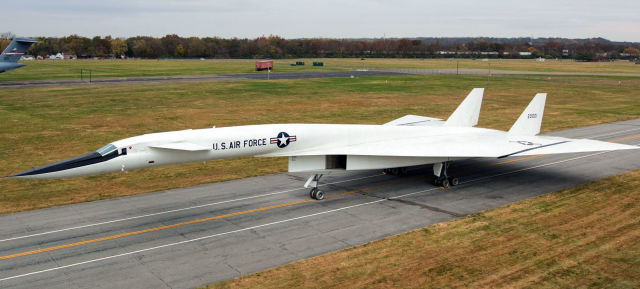
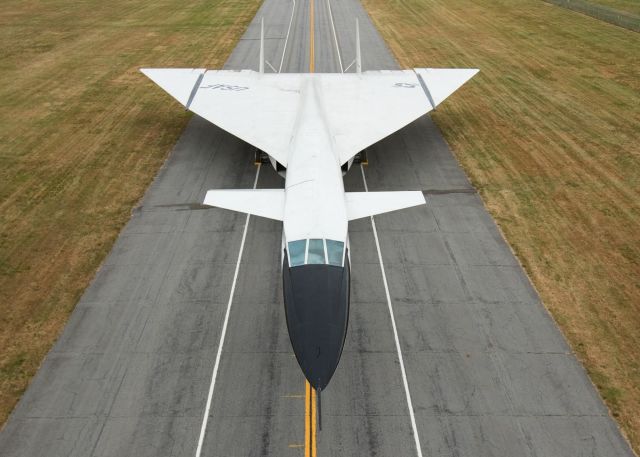

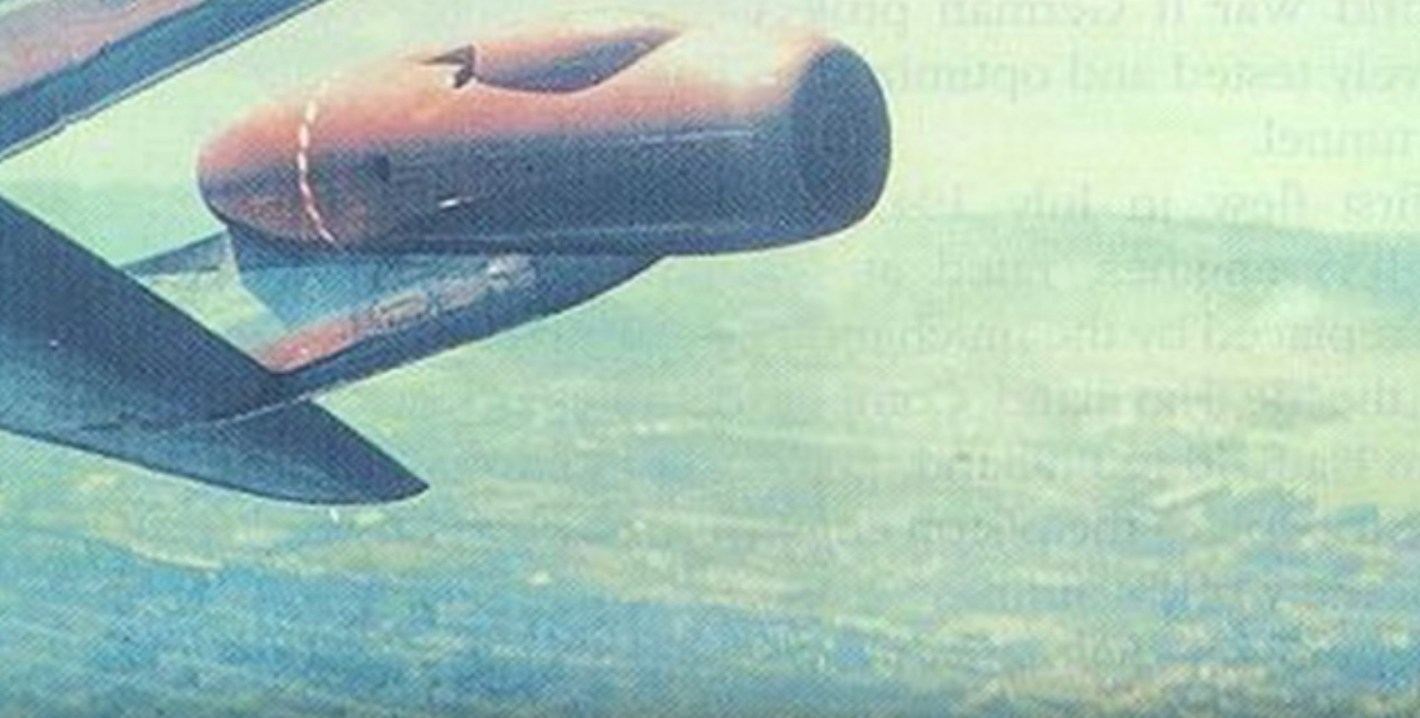


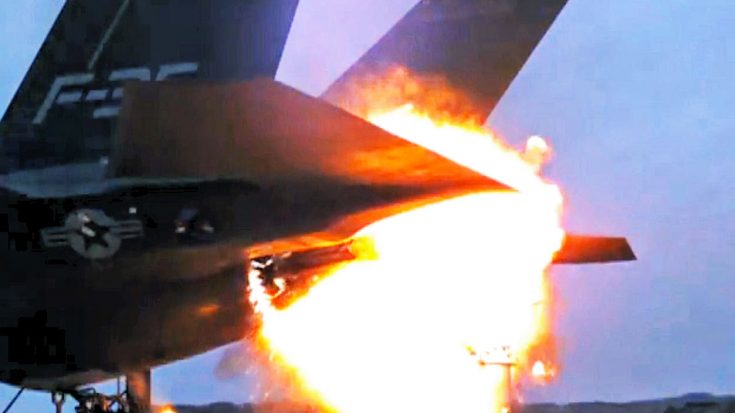

.jpg)
